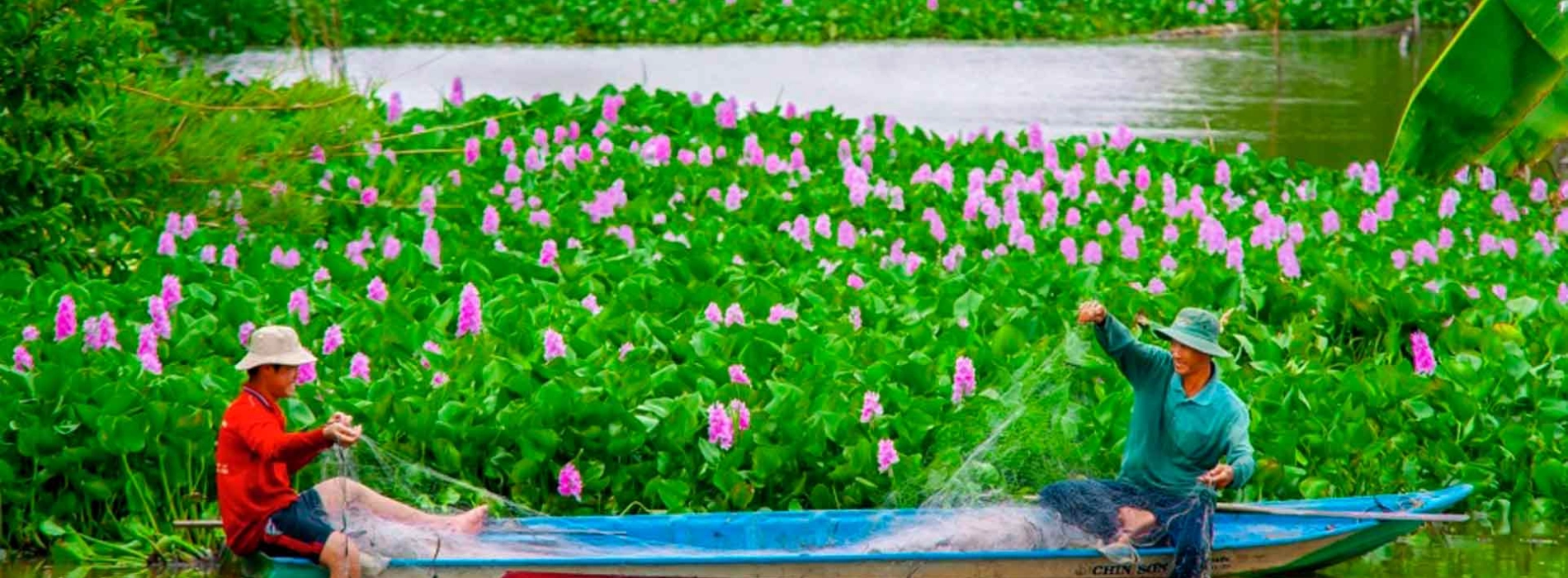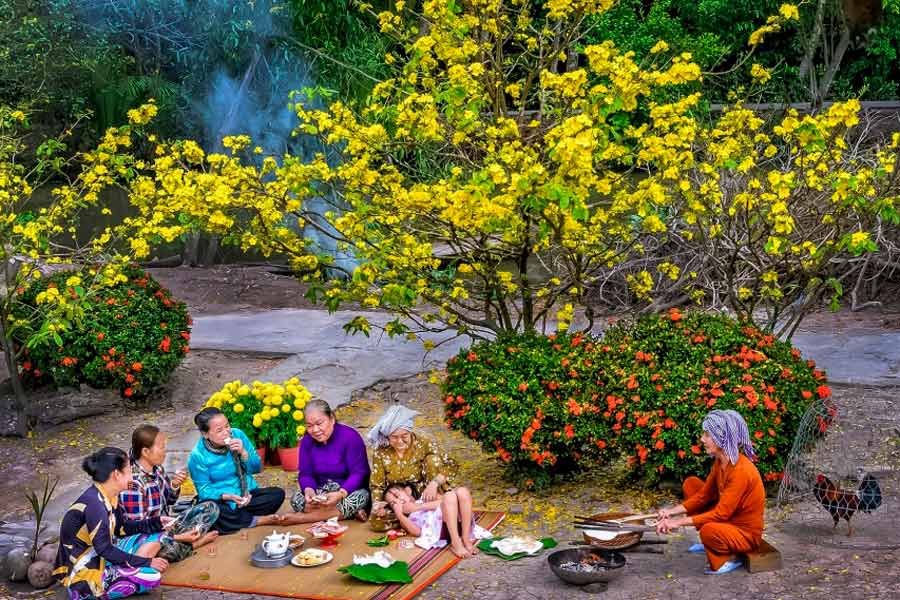Hau Giang

Hau Giang, nestled in the heart of the Mekong Delta in Vietnam, is a province that weaves a tapestry of agricultural richness and cultural vibrancy. With Vi Thanh as its capital, the province thrives on the fertile lands along the Hau River, cultivating a mosaic of crops ranging from rice and sugarcane to a variety of succulent fruits. The cultural fabric is enriched by traditional music, festivals, and the diverse practices of the local communities.
 Explore the beauty of Hau Giang countryside
Explore the beauty of Hau Giang countryside
Though not as frequently traversed by tourists as some other Vietnamese destinations, Hau Giang invites visitors to explore its serene landscapes, navigate floating markets, and partake in the daily rhythms of life along the river. As the province grapples with challenges such as seasonal flooding, ongoing efforts underscore the commitment to sustainable development and the preservation of its unique identity within the Mekong Delta's mosaic.
Hau Giang Province unfolds a narrative that spans centuries of human habitation and historical significance. The region's story encompasses ancient roots, with evidence of early settlements, and extends through the colonial era when the French held sway over Vietnam. During the tumultuous years of the Vietnam War, Hau Giang found itself at the crossroads of conflict, experiencing the profound impacts of war and witnessing intense fighting due to its strategic location near Cambodia. The post-war period ushered in a phase of reconstruction and rebuilding, and Hau Giang, like the rest of the country, faced the challenges of healing and development.
In 2004, the province underwent administrative reorganization, officially becoming Hau Giang Province, with Vi Thanh as its capital. This marked a new chapter in the province's history, characterized by economic growth and agricultural development. Hau Giang became a key player in Vietnam's rice production, and efforts were directed towards modernizing agricultural practices to enhance productivity. The region's rich cultural heritage, encompassing traditional music, vibrant festivals, and the unique practices of its diverse communities, remained integral to its identity throughout these changes.
While Hau Giang has experienced economic prosperity, it has also grappled with challenges inherent to the Mekong Delta, such as seasonal flooding and salinity intrusion. The province's resilience and adaptability, however, have been evident in its continuous efforts to address these challenges and pursue sustainable development. Today, Hau Giang stands as a testament to the intertwining of history, culture, and development, offering visitors a glimpse into Vietnam's multifaceted past and the enduring spirit of its people amid the scenic waterways and fertile lands of the Mekong Delta.
Hau Giang Province, located in the Mekong Delta of Vietnam, experiences a tropical climate with distinct wet and dry seasons. Here's a general overview of the weather patterns in Hau Giang:
- The dry season in Hau Giang typically lasts from December to April. During this period, the weather is relatively more stable with lower humidity levels. Days are warm, and temperatures can range from 25 to 30 degrees Celsius (77 to 86 degrees Fahrenheit). This season is considered the most favorable for travel and outdoor activities.
- Transitioning from the dry season, Hau Giang experiences a hot season from April to June. Temperatures can rise, occasionally reaching above 30 degrees Celsius (86 degrees Fahrenheit). The humidity increases, and occasional short rain showers may occur.
- The rainy season in Hau Giang typically starts around July and lasts until November. This period is characterized by increased rainfall, high humidity, and occasional storms. The wet season brings lush greenery to the region but can also lead to flooding, especially in low-lying areas. Temperatures remain warm, ranging from 25 to 30 degrees Celsius (77 to 86 degrees Fahrenheit).
 Discover the wonderful beauty of Vi Thuy Melaleuca forest
Discover the wonderful beauty of Vi Thuy Melaleuca forest
Getting to Hau Giang Province typically involves traveling to its capital, Vi Thanh. Here are some general guidelines on how to get to Hau Giang:
1. By Air:
- The nearest major airport to Hau Giang is Can Tho International Airport (VCA), which is approximately 60 kilometers away. From Can Tho Airport, you can take a taxi or use other local transportation options to reach Hau Giang.
2. By Bus:
- Bus services operate between Hau Giang and major cities in the Mekong Delta and other regions of Vietnam. Buses are a cost-effective mode of transportation, and the journey may take several hours depending on the starting point.
3. By Car:
- If you prefer more flexibility and convenience, you can hire a car or use a taxi to reach Hau Giang. The road network in Vietnam is continually improving, and major highways connect different provinces.
4. By Boat:
- Given its location in the Mekong Delta, waterways are an essential means of transportation in Hau Giang. You can explore the province by taking a boat from nearby cities or towns along the Mekong River.
5. By Motorcycle or Scooter:
- Renting a motorcycle or scooter is a popular option for local travel within Hau Giang and the Mekong Delta. It provides flexibility and the chance to explore the scenic countryside at your own pace.